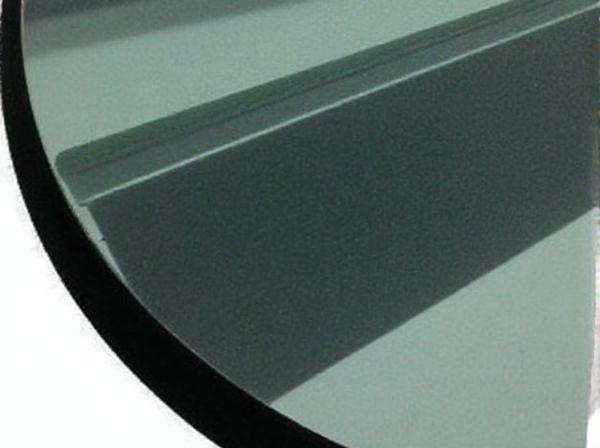
Photo illustration: Sound Insulating Interlayer Windshield vs Standard Interlayer Windshield
A sound insulating interlayer windshield significantly reduces road noise and vibrations compared to a standard interlayer windshield, providing a quieter driving experience. Its specialized acoustic layer enhances comfort by minimizing external sound intrusion, making it ideal for long trips or city driving. Your vehicle benefits from improved sound insulation without compromising safety or visibility.
Table of Comparison
| Feature | Sound Insulating Interlayer Windshield | Standard Interlayer Windshield |
|---|---|---|
| Noise Reduction | High - reduces road and wind noise significantly | Low - minimal noise dampening |
| Interlayer Material | Acoustic PVB or specialized sound-damping polymer | Standard PVB (Polyvinyl Butyral) |
| Driving Comfort | Enhanced cabin quietness and reduced fatigue | Basic cabin noise levels |
| Cost | Higher - premium sound insulation technology | Lower - standard manufacturing cost |
| Thickness | Typically thicker interlayer for soundproofing | Standard thickness |
| UV Protection | Integrated UV filtering | Standard UV protection |
| Typical Applications | Luxury vehicles, high-end cars prioritizing noise control | Most mass-market vehicles |
Introduction to Windshield Interlayers
Windshield interlayers play a crucial role in vehicle safety and comfort by bonding glass layers and absorbing impact energy. Sound insulating interlayer windshields incorporate specialized materials like polyvinyl butyral (PVB) with acoustic dampening properties, reducing external noise significantly compared to standard PVB interlayers. Standard interlayer windshields mainly emphasize structural integrity and shatter resistance without enhanced soundproofing capabilities.
What Is a Sound Insulating Interlayer Windshield?
A sound insulating interlayer windshield incorporates a specialized acoustic layer designed to reduce external noise, significantly improving cabin quietness compared to a standard interlayer windshield. This advanced laminated glass typically uses a viscoelastic polymer to dampen sound vibrations, blocking road and wind noise more effectively. Standard interlayer windshields lack this enhanced soundproofing feature, focusing primarily on safety and structural integrity rather than acoustic performance.
Standard Interlayer Windshield Explained
Standard interlayer windshields consist of two layers of glass bonded by a polyvinyl butyral (PVB) interlayer, providing basic safety by holding glass shards together during impact. This standard configuration offers effective protection against penetration and reduces the risk of injury but lacks advanced sound insulation properties. Unlike sound insulating interlayer windshields, standard interlayers do not significantly attenuate external noise, making them less ideal for drivers seeking a quieter cabin experience.
Key Differences Between Sound Insulating and Standard Interlayers
Sound insulating interlayer windshields incorporate specialized viscoelastic materials that significantly reduce noise transmission compared to standard interlayer windshields. These advanced interlayers enhance acoustic comfort by damping vibrations and blocking external sounds more effectively, making them ideal for luxury and electric vehicles prioritizing cabin quietness. Standard interlayer windshields typically consist of basic polyvinyl butyral (PVB) layers, offering structural safety and UV protection but limited noise reduction capabilities.
Acoustic Performance Comparison
Sound insulating interlayer windshields typically incorporate specialized acoustic damping materials that significantly reduce external noise transmission compared to standard interlayer windshields. These advanced laminates improve in-cabin sound quality by attenuating high-frequency sounds, resulting in a quieter driving environment. Testing shows sound insulating windshields can achieve noise reduction levels up to 5-7 decibels greater than conventional laminated glass with standard interlayers.
Safety and Structural Benefits
Sound insulating interlayer windshields incorporate specialized acoustic layers that enhance noise reduction while maintaining impact resistance and structural integrity, providing superior protection during collisions compared to standard interlayer windshields. The acoustic interlayer also improves occupant safety by minimizing driver distraction from external noise, contributing to better concentration and quicker reaction times. Standard interlayer windshields primarily focus on basic impact resistance and UV filtering but lack the advanced sound insulation that enhances both comfort and safety in vehicles.
Impact on Driving Comfort and Experience
Sound insulating interlayer windshields significantly reduce road, engine, and wind noise, creating a quieter cabin environment that enhances driving comfort and reduces fatigue on long trips. Unlike standard interlayer windshields, which primarily provide structural support and basic noise reduction, sound insulating variants use specialized adhesive layers designed to absorb and dampen sound waves effectively. This improvement in acoustic insulation contributes to a more relaxed and focused driving experience by minimizing auditory distractions and improving overall in-car ambiance.
Cost and Value Considerations
Sound insulating interlayer windshields typically cost 20-30% more than standard interlayer windshields due to advanced acoustic materials designed to reduce noise levels by up to 50%. The higher upfront investment is offset by enhanced cabin comfort, which is particularly valuable for luxury vehicles and long-distance drivers seeking a quieter ride. Standard interlayer windshields offer a lower initial cost but lack significant noise reduction benefits, potentially impacting overall driving experience and resale value.
Suitability for Different Vehicle Types
Sound insulating interlayer windshields offer superior noise reduction properties, making them ideal for luxury vehicles and electric cars where cabin quietness is a priority. Standard interlayer windshields, typically using PVB (polyvinyl butyral), provide essential safety and durability suitable for most commercial and passenger vehicles without specific noise control needs. Vehicles operating in urban environments or those with high-speed performance benefit more from sound insulating interlayer windshields due to enhanced acoustic comfort and vibration dampening.
Choosing the Right Windshield for Your Needs
Sound insulating interlayer windshields significantly reduce road noise and vibrations compared to standard interlayer windshields, enhancing cabin comfort and allowing for clearer conversations and better audio experience. Choosing the right windshield depends on your priorities: if noise reduction is crucial, opt for sound insulating glass with a specialized PVB or acoustic layer that dampens sound waves more effectively. For budget-conscious drivers valuing basic safety and UV protection, a standard interlayer windshield offers adequate performance without the added cost of advanced soundproofing technology.
 caratoz.com
caratoz.com